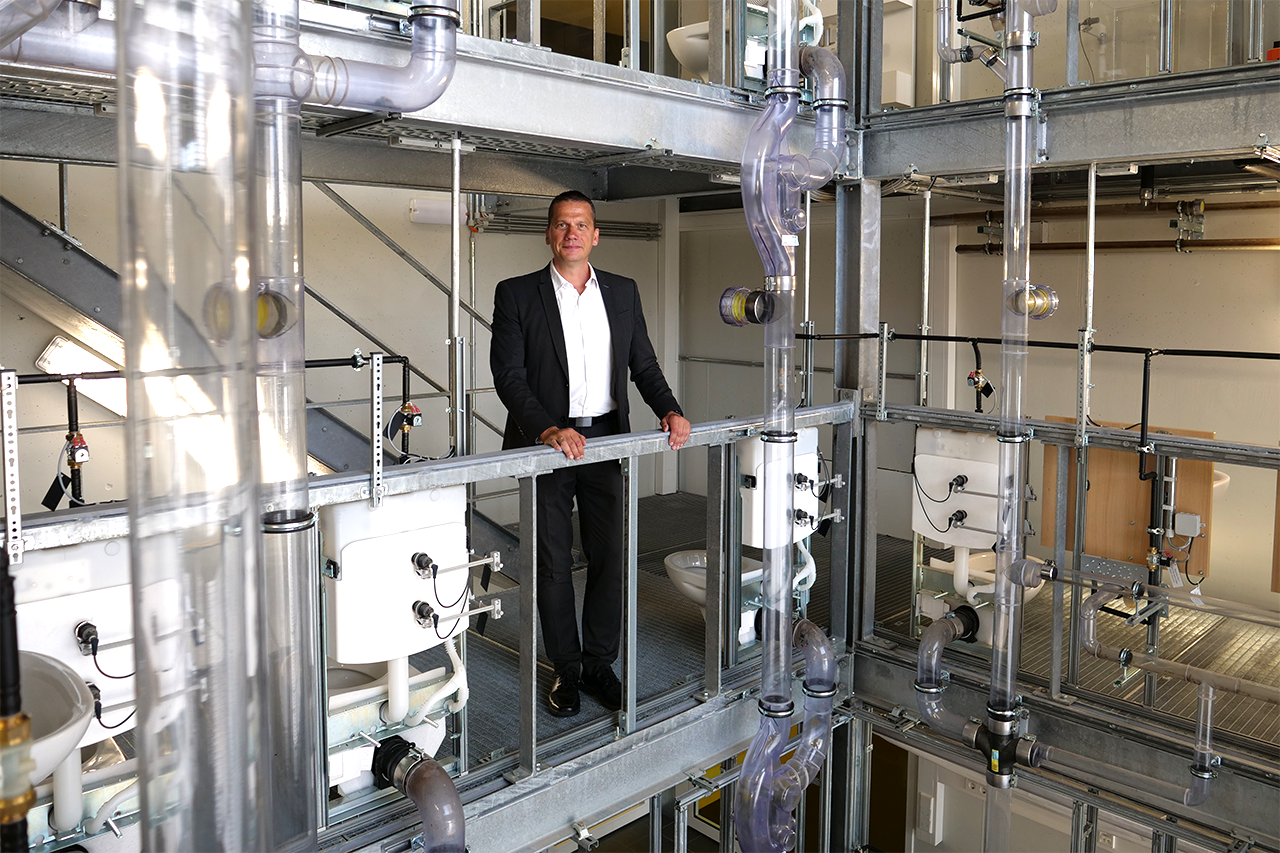Easier temperature detection and hydronic balancing in existing domestic hot water systems

Hot water systems operated at excess temperatures cause high energy consumption. Continuous monitoring can help to reduce this and at the same time comply with the requirements for preventing legionella infestation. In an article in the trade journal HLH BD. 74 (2023) No. 06 , Dipl.-Ing. (FH) Carsten Freitag and Prof. Gero Guzek present a method using disruptive sensors that has already been tested in practice.
According to standards, large hot water heating systems must be operated with an outlet temperature from the central hot water heating system of >=60°C and a circulation inlet temperature of at least 55°C with a maximum temperature spread of 5 Kelvin. Experience has shown that many existing hot water installations are not sufficiently hydraulically balanced. They are often operated at higher temperatures and with larger temperature spreads. This inevitably leads to higher energy consumption in combination with hygiene risks due to partial temperature undershoots. Many users now also see reducing the drinking water storage temperature from 60°C to 50°C or less as a sensible method of saving heating energy. Contamination of the drinking water network with legionella can be the result.
Disruptive sensors that can be retrofitted to the pipework without causing damage can be used to record the temperature in the drinking water installation. This enables targeted monitoring to detect temperature underruns in the drinking water network and subsequently counteract them with suitable regulation devices in the drinking water network.
Following the successful monitoring of the first properties, it is planned to equip further properties with disruptive sensors. Our "transparent water tower" in Nieperbau, unique in the new federal states, offers excellent conditions for establishing monitoring, expanding practical trials and conducting research in the field of drinking water hygiene. For this purpose, extensive extensions in the form of a water heating system, hot water and circulation pipework etc. must be tackled. There are also plans to install a gravity drainage system in the centre level. Enquiries have been made to well-known manufacturers/suppliers and the company responsible for the tower's construction. The work is being scientifically supported in the form of a bachelor's thesis(see PDF) and supervised by Prof Guzek and Dipl.-Ing. Frank Groksch. As things currently stand, we expect to be able to put the extended sanitary tower into operation at the end of 2024.